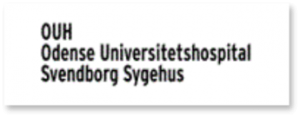Reducing Stress through the Patient Briefcase initiative
Odense University Hospital, Denmark
Tackling Chronic Obstructive Pulmonary Disease (COPD)
The Patient Briefcase initiative is on-going project involving Svendborg Hospital and Odense University Hospital, Denmark and patients suffering from Chronic Obstructive Pulmonary Disease (COPD). More than 2500 consultations with patients have already been carried out by a team of eight nurses via the Patient Briefcase, and new patients continue to become engaged in the program. The Patient Briefcase was developed through a cooperative effort between Odense University Hospital and MediSat® – the technological provider.
What is the Telehealth intervention? How does the technology work?
The Patient Briefcase is about the size of a large laptop. It is easy to operate and allows care assistants to collect valuable data about the patient’s lung function and the amount of oxygen in the blood. This in turn helps nurses to provide patients with the information they need to master their chronic condition. Patients are able to participate in live video consultations without leaving the comfort of their living room, while care assistants are then able to collect valuable data about the patient’s lung function and the amount of oxygen in the blood. This helps nurses to provide patients with the information they need to control their chronic condition.
The device is installed in the patient’s home by a technician who also assists the patient through the first consultation. The nurses are all specially trained to consult patients on screen beforehand. This technological initiative allows patients to participate in live video consultations without leaving the comfort of their home environment. “I am often greeted by patients welcoming me into their living room,” says Bente, one of the nurses involved. The Patient Briefcase remains in their home for approximately 7 days, with online consultations lasting between 10 to 30 minutes. In general the practitioners have found that the “fear” of technology usually disappears quickly, and the Briefcase provides for a flexible interface which is easy to operate. “I normally ask them [the patients] whether they have problems turning on their TV or picking up the phone, and I tell them that it’s all the technical knowledge they need to operate the Patient Briefcase,” adds Bente.
Outcome of telehealth intervention
This initiative has yielded immediate benefits to both the patient and the healthcare provider. Patients recently diagnosed with COPD can be confused and insecure when discharged from hospital. There is also the issue of transportation, which can be a hindrance to COPD patients with a limited air supply. Daily consultations with a nurse in the comfort of their own homes can be of great value to these patients. “The Patient Briefcase makes it easier for COPD patients to return home and continually incorporate new knowledge about their condition into their everyday lives,” says one nurse. The new consultation practice has proved less stressful for both patients and nurses. “Hospitalisation is a stressful experience and patients often forget important information such as how to take their medicine correctly,” noted another nurse currently conducting online consultations with COPD patients.
The goal of the Patient Briefcase is to bring down the number of hospitalisations for patients diagnosed with COPD. Online consultations has helped to address this goal. Previously, nurses were able to visit 3-4 patients on an ordinary work day. Today, Bente and her colleagues consult three to four times as many without ever leaving the hospital. As a result the nurses can focus entirely on their interaction with the patients and do not need to adapt to changing environments while visiting patients.
For further information
Anne Dichmann Sorknæs, PhD, Nurse
Odense University Hospital and University of Southern Denmark
Anne.dichmann.sorknæs@rsyd.dk
(March 2011)




